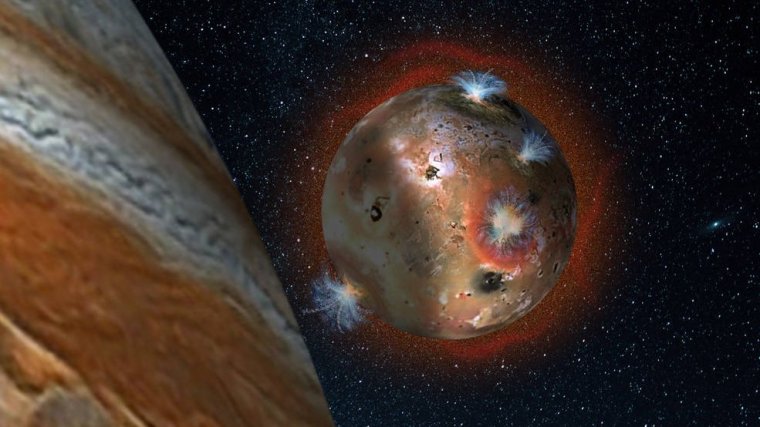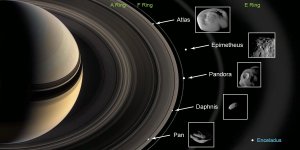| News / Space News |
New Research Reveals Fluctuating Atmosphere of Jupiter’s Volcanic Moon
NASA | AUGUST 13, 2016
Jupiter’s volcanic moon Io has a thin atmosphere that collapses in the shadow of Jupiter, condensing as ice, according to a new study by NASA-funded researchers. The study reveals the freezing effects of Jupiter’s shadow during daily eclipses on the moon’s volcanic gases.

Artist’s concept of the atmospheric collapse of Jupiter’s volcanic moon Io. ![]()
Io is the most volcanically active object in the solar system. The volcanoes are caused by tidal heating, the result of gravitational forces from Jupiter and other moons.
These forces result in geological activity, most notably volcanoes that emit umbrella-like plumes of sulfur dioxide gas that can extend up to 300 miles (480 kilometers) above Io and produce extensive basaltic lava fields that can flow for hundreds of miles.
The new study documents atmospheric changes on Io as the giant planet casts its shadow over the moon’s surface during daily eclipses.
Io’s thin atmosphere, which consists primarily of sulfur dioxide (SO2) gas emitted from volcanoes, collapses as the SO2 freezes onto the surface as ice when Io is shaded by Jupiter, then is restored when the ice warms and sublimes (i.e. transforms from solid back to gas) when the moon moves out of eclipse back into sunlight.
Data showed that Io’s atmosphere begins to “deflate” when the temperatures drop from -235 degrees Fahrenheit in sunlight to -270 degrees Fahrenheit during eclipse. Eclipse occurs two hours of every Io day (1.7 Earth days).
In full eclipse, the atmosphere effectively collapses, as most of the sulfur dioxide gas settles as frost on the moon’s surface. The atmosphere redevelops as the surface warms once the moon returns to full sunlight.
Io’s atmosphere is in a constant state of collapse and repair, and shows that a large fraction of the atmosphere is supported by sublimation of SO2 ice. Though Io’s hyperactive volcanoes are the ultimate source of the SO2, sunlight controls the atmospheric pressure on a daily basis by controlling the temperature of the ice on the surface.
YOU MAY ALSO LIKE

